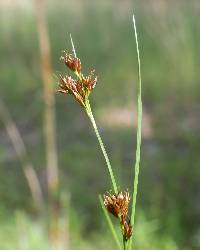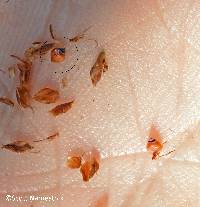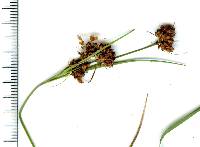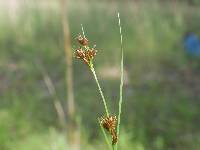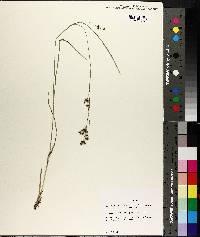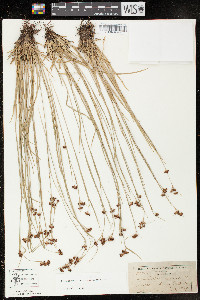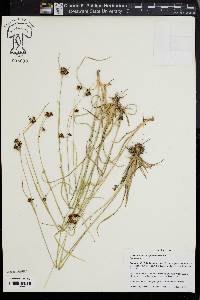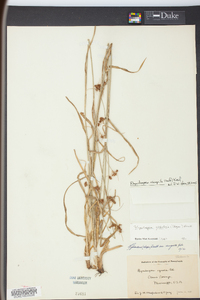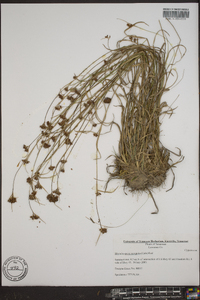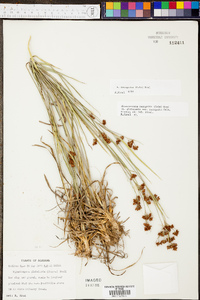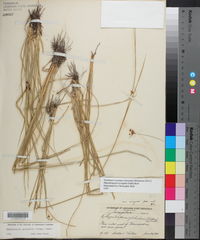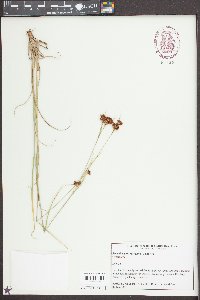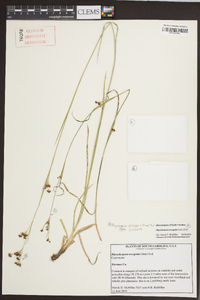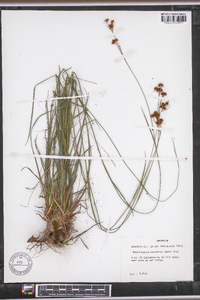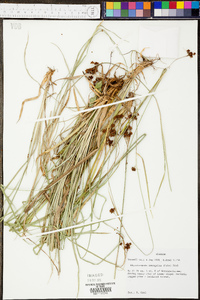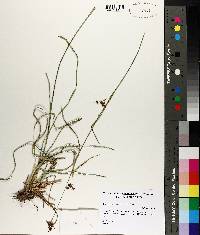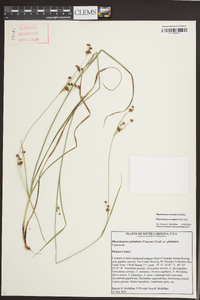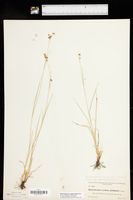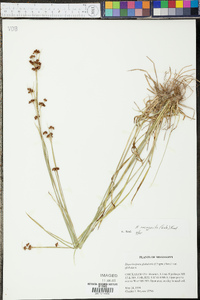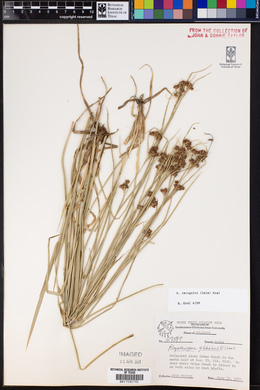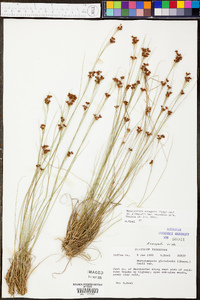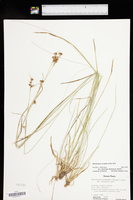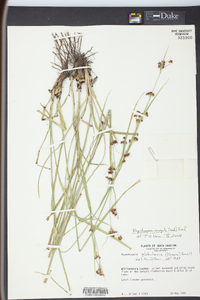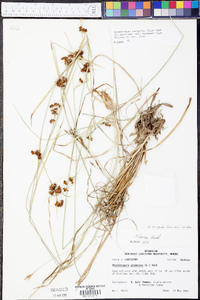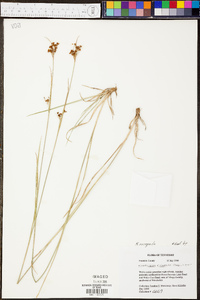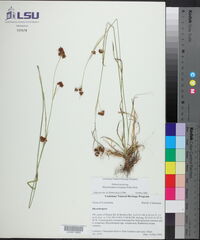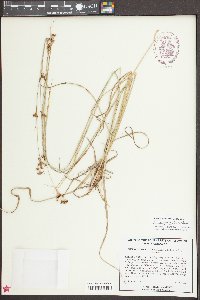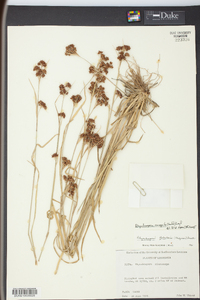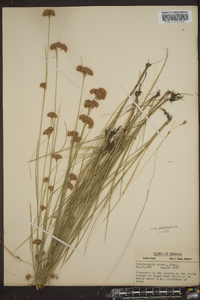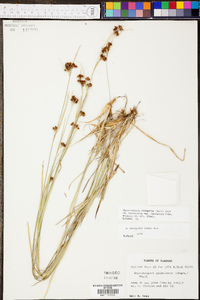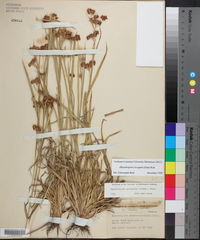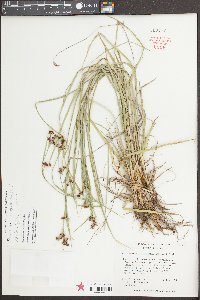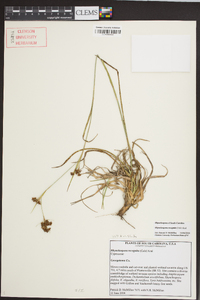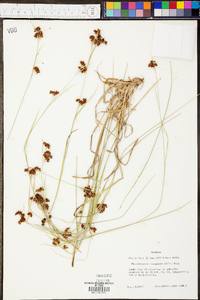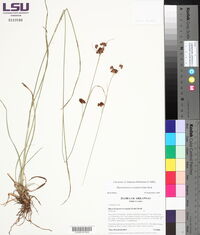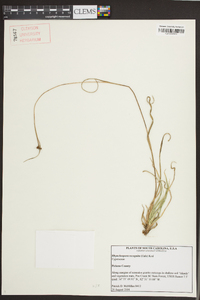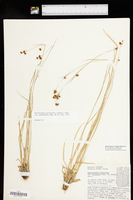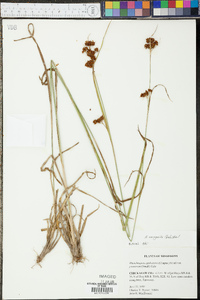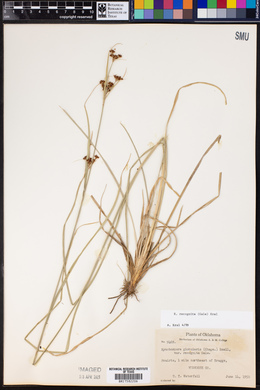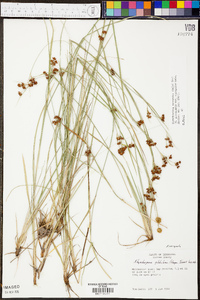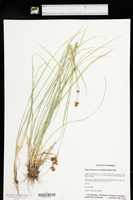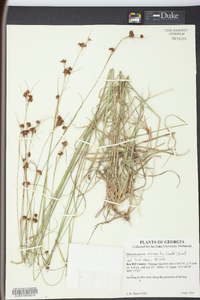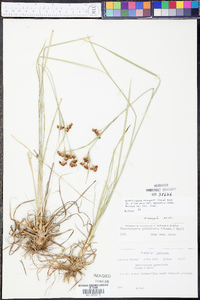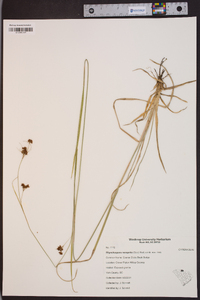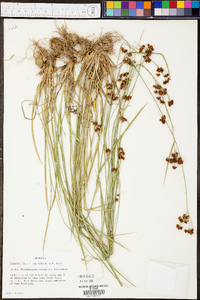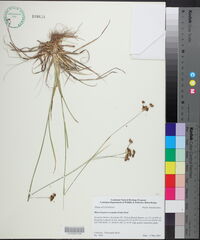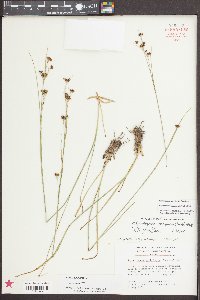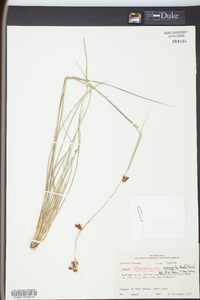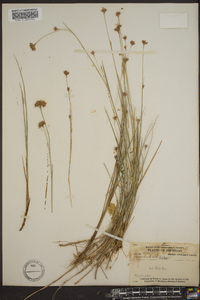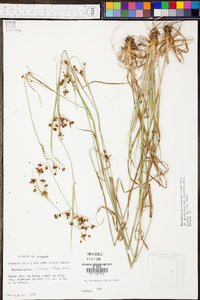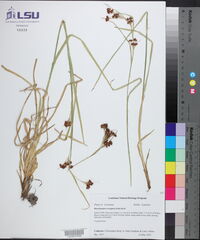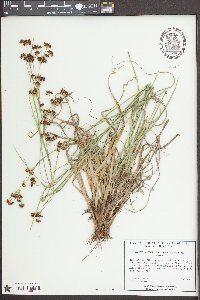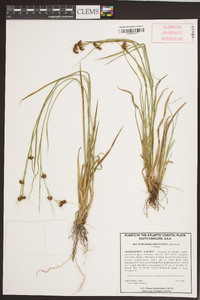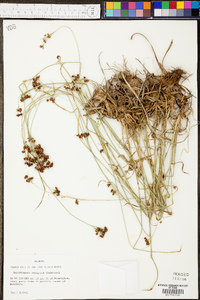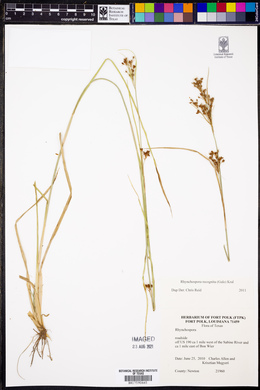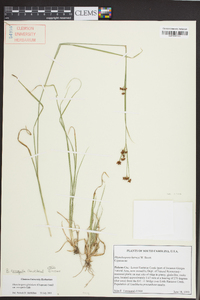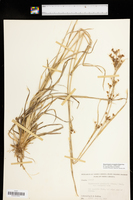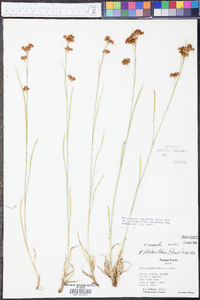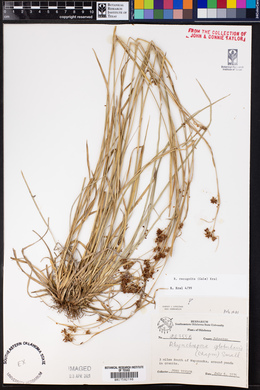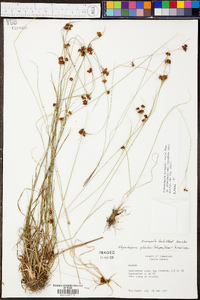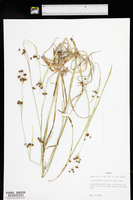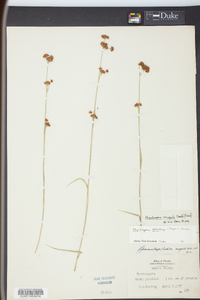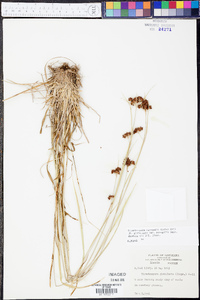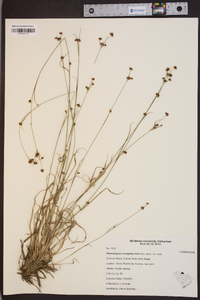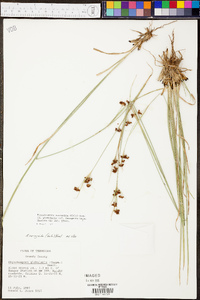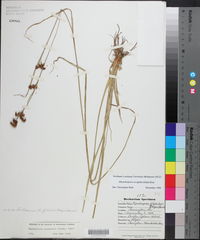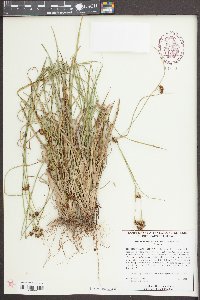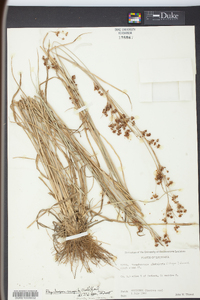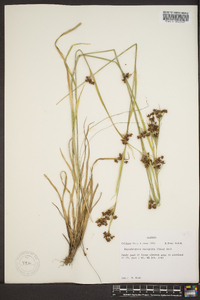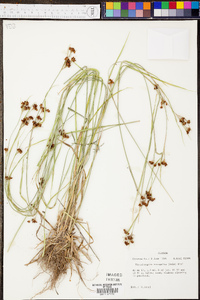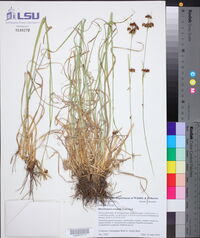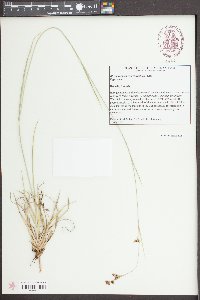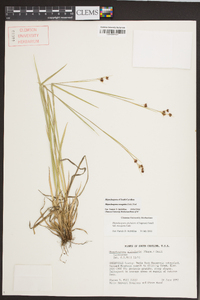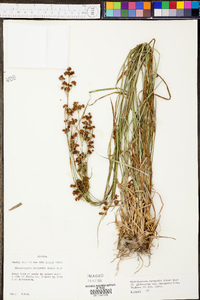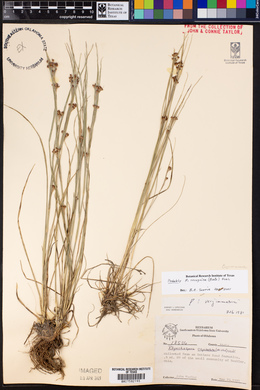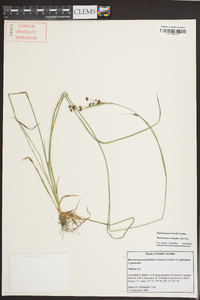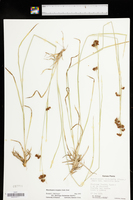Rhynchospora recognita
|
|
|
|
Family: Cyperaceae
Coarse Globe Beak Sedge, more...globe beaksedge
|
Plants perennial, cespitose, 60-100(-120) cm; rhizomes absent. Culms leafiest at base, trigonous, slender, somewhat stiff. Leaves exceeded by culms; basal blades spreading, blunt, distal ascending, linear, proximally flat, 2-5 mm wide, apex trigonous, subulate, tapering. Inflorescences: spikelet clusters 3-5 or more, compact, proximalmost widely spaced, turbinate to hemispheric or lobed; peduncles ascending, branches ascending; leafy bracts setaceous at apex, exceeding compounds, setaceous bracts often exceeding ultimate clusters, imparting bristly aspect. Spikelets red brown, ovoid to lanceoloid, (2.7-)3-4 mm, apex acuminate; fertile scales ovate, 2.5-3 mm, apex acute, short acuminate, or notched, midrib usually excurrent as cusp or awn. Flowers: perianth bristles 6, not reaching further than fruit midbody. Fruits 1-3 per spikelet, (1.8-)2-2.3(-2.5) mm; body brown, tumidly lenticular, obovoid to suborbicular, 1.4-1.6(-1.8) × 1.2-1.5 mm; surfaces transversely sharply rugose, intervals of rows of vertical, variously rectangular alveolae; tubercle somewhat compressed, triangular to short conic, 0.5-0.7 mm, short subulate, basal rim often present. Fruiting spring-summer(-early fall). Sands, silts, clays, and peats of low meadows, ditches, low clearings, savannas; 0-400 m; Ala., Ark., Calif., Del., D.C., Fla., Ga., Ill., Ind., Kans., Ky., La., Md., Mich., Miss., Mo., N.J., N.C., Okla., Pa., S.C., Tenn., Tex., Va., W.Va.; West Indies; Central America. Rhynchospora recognita has larger fruit and tubercles than is consistent with the varietal rank it has held under R. globularis. The two are often observed in the same locality, and in such cases, R. recognita is taller, stiffer, broader leaved, with spikelet clusters wider, denser, and bristlier, and with distinct orange tints in comparison with the darker, less dense, narrower, and less bristly spikelet clusters of plants of R. globularis.
Perennial herb, tufted 0.6 - 1 m tall Leaves: alternate, spreading (basal) or ascending (upper), 2 - 5 mm wide, linear with a flat base and three-angled tip, parallel-veined, with a sheathing base that encloses the stem. Sheaths opening at the top. Inflorescence: a head of three to five (or more) spikelet clusters, subtended by bracts. Spikelet clusters dense, reverse cone-shaped to hemispheric, sometimes lobed. Flowers: minute, subtended by a floral scale, lacking sepals and petals, bearing five or six bristles. Stamens exserted. Pistil one. Style two-cleft. Fruit: a one-seeded achene, one to three per spikelet, brown, about 1.5 mm long (not including tubercle), 1 - 1.5 mm wide, reverse egg-shaped to more or less round, biconvex, sharply wrinkled. Tubercle about 0.5 mm long, triangular to shortly conic, somewhat flattened. Culm: 0.6 - 1 m long, thin, overtopping leaves, three-sided, solid, leafiest at base. Spikelets: numerous, crowded, reddish brown, 2 - 4 mm long, egg-shaped to lance-shaped with a pointed apex. Floral scales spirally arranged and overlapping, 2.5 - 3 mm long, egg-shaped with a pointed or notched apex, midrib extending beyond the tip. Similar species: No information at this time. Flowering: late May to late June Habitat and ecology: Rare in the Chicago Region. Found in sedge meadows and moist sandy prairies. Occurence in the Chicago region: native Etymology: Rhynchospora comes from the Greek words rhynchus, meaning beak, and spora, meaning seed, referring to the beaked achene. Author: The Morton Arboretum From Flora of Indiana (1940) by Charles C. Deam This species has been reported from Lake and Porter Counties. In the herbarium of the University of Wisconsin there are 2 sheets from Lake County and 4 sheets from Porter County collected by Umbach. These specimens were found in wet, sandy soil along sloughs and in bogs. Collected in Newton County in 1938 by Madge McKee in swampy land about 3 miles northwest of Morocco. Specimen in her herbarium. …… Indiana Coefficient of Conservatism: C = 10 Wetland Indicator Status: FACW |


